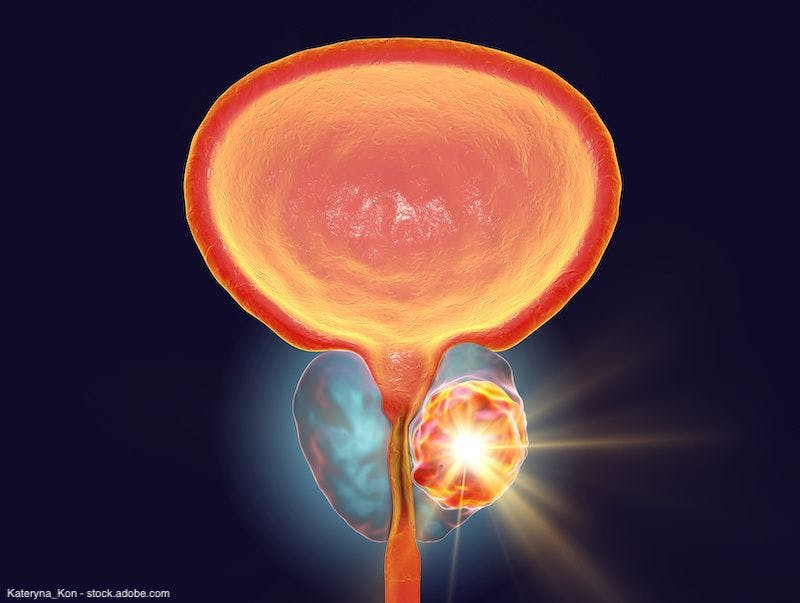Publication
Article
Urology Times Journal
Debate continues on best strategy for small renal masses
Author(s):
Surgical approach and ischemia time are among key topics.
Urologists continue to debate how best to manage and treat small renal masses. Many disagree about whether or when to biopsy renal masses 4 cm or smaller, or whether to use active surveillance or surgically remove them. Which approach to use for surgery and whether ischemia time matters are also a matter of contention. Although newer studies are providing evidence-based answers, the treatment and management of small renal masses can differ vastly from one urology practice to the next. With widespread use of diagnostic imaging, incidental small renal masses account for roughly 70% of all newly diagnosed kidney tumors, according to William C. Huang, MD, professor and vice chair for clinical affairs in the Department of Urology at NYU Grossman School of Medicine in New York, New York.1
Is biopsy in, out, or somewhere in between?
Some urology practices biopsy patients before all interventions for small renal masses, whereas others hardly use renal mass biopsy, according to Huang.
Dipen J. Parekh, MD

“The typical indications for a renal biopsy are when the actual outcome of the biopsy can lead to a change in management. This means you are getting an actionable outcome from the biopsy,” said Dipen J. Parekh, MD, chair and founding director of The Desai Sethi Urology Institute at The University of Miami Miller School of Medicine.
Renal mass biopsy is a useful clinical tool but in many patients it does not alter clinical management, according to Alexander Kutikov, MD, chief of the Division of Urology and Urologic Oncology and Roberta R. Scheller Chair in Urologic Oncology at Fox Chase Cancer Center in Philadelphia, Pennsylvania.2
Parekh said he recommends a renal mass biopsy if the mass appears infiltrative or patients decide on treatment options such as radiofrequency ablation or cryoablation. Parekh also recommends renal mass biopsy for patients choosing active surveillance.
William C. Huang, MD

“Some great examples of where renal mass biopsy would not help: I just saw a patient who is 86 years old and has a 3-cm renal mass. He’s in a wheelchair and he had a stroke, so there is no value in me doing a biopsy because we’re still not going to do anything even if it is malignant,” Huang said. “Then you have the other end of the extreme, where you have a 35-year-old [patient] with a suspicious 3-cm renal mass. Unless you are really trying to avoid doing something about it for whatever reason, most 35-year-old [individuals] will not want to walk about with a suspicious small renal mass.”
In that situation, according to Huang, most patients likely would go straight to treatment—if it is benign, all is well, but if it is malignant then the necessary steps have been taken. A new nuclear medicine test called the sestamibi scan is being investigated to potentially replace the biopsy, but more information is needed, according to Kutikov. “When a sestamibi scan is ‘hot,’ it is highly indicative of an oncocytoma or a chromophobe renal cancer, which is a very indolent kidney tumor. If the tumor is ‘cold,’ then one goes toward treatment,” Kutikov said.
Active surveillance or surgery?
Alexander Kutikov, MD

In kidney cancer, there is the problem of treatment disconnect, according to Kutikov.3 “We’re finding more tumors and diagnosing them earlier, yet the mortality rate from kidney cancer continues to rise. How do you reconcile this? One explanation is that we are diagnosing tumors that may never need to be treated. That’s why the strategy of active surveillance is so important, especially in older, comorbid patients with a limited life expectancy. There are volumes of literature now that empower urologists to forgo treatment,” Kutikov said.
Still, active surveillance for small renal masses is greatly underutilized in real-world practice, according to Huang.4 “There’s no doubt that a lot of renal masses are being overtreated,” Huang said.
The underutilization of active surveillance is like what happened with Gleason 6, group 1 prostate cancer prior to the past decade, according to Huang. “Now, the preferred treatment is active surveillance for prostate cancer that is low risk. But for renal masses, particularly very small masses less than 2 cm, observation has all these qualifiers like after extensive discussion and assessment of the patient’s comorbidities….But when you look at the data, a small renal mass is likely no more dangerous than a low-risk prostate cancer. A lot of this has to do with physician preference in addition to patient education and understanding,” Huang said.
Open, laparoscopic, or robotic: Is there a best approach?
Most renal masses of 4 cm or less should be removed with a partial nephrectomy, according to Kutikov. These experts agree that most urologists who have access to and are skilled in robotic surgery will do a partial nephrectomy using robotics. This is not because of better oncologic outcomes, but for the potential benefits of faster recovery, shorter hospital stays, and less need for pain medication.
“[Robotic surgery] is a less invasive option. You get very good oncologic outcomes. Patients go home, for the most part, the next day or the day after. And the results are very good. So, my preferred option is the robotic partial nephrectomy,” Parekh said.
Still, choosing the right approach can be complex. “The preferred treatment option varies depending on patient and surgeon factors. For example, a patient can have a 3-cm renal mass but has had multiple abdominal surgeries, has a solitary kidney, and is on multiple blood thinners. All those factors could alter the surgeon’s decision-making about which technique or approach to choose,” Huang said.
Ischemia time: Does it matter as much as we think?
Huang, who routinely uses clamps during partial nephrectomy, said optimal clamp time varies widely by patient and how healthy the kidneys are prior to treatment. A clamp time of 25 minutes on a kidney only working at 50% function may have a significantly different impact than a clamp time of 25 minutes on a healthy kidney, he said. Recent studies including one by Parekh et al clearly show that although renal ischemia time is important, it is not as significant as previously thought, Parekh said.5
“The key goal of doing a partial nephrectomy is to make sure you have the best cancer-related outcomes. And that means doing this in a relatively bloodless field, so you have good visualization when excising the tumor and do a good reconstruction without adversely impacting renal function,” Parekh said. “We do clamp the artery. In most patients, the clamp times range between 10 and 20 minutes. In less than 10% of patients, the clamp time goes beyond 20 minutes. But studies have shown that baseline quality and remnant quantity of renal parenchyma are more important than ischemia time in predicting renal function.”
A note about cold vs warm ischemia
There is no high-level evidence favoring cold vs warm ischemia, according to Parekh. But warm ischemia is more likely preferred because most partial nephrectomies done laparoscopically or robotically do not lend themselves easily to cold ischemia, Parekh said. Huang said he only utilizes cold ischemia with open partial nephrectomy and would only do such a procedure if certain situations demanded it, such as operating on a poorly functioning solitary kidney.
Postop follow-up
These experts said they manage small renal mass patients after treatment based on patient pathology. About 20% of small renal masses will be benign and for those there is no strict follow-up, according to Huang.6
For small renal pathologic stage IA tumors, Huang said, he usually images patients every 6 months for about 3 years, then annually. Parekh will typically follow patients with high-grade invasive small renal masses more aggressively for 5 years.
“You have to really think about why you’re imaging patients. The rate of local recurrence for a completely resected small renal mass is less than 2% [and less than 5% for distant recurrence], so most of these patients are almost universally completely cured after you remove the mass,” Huang said. “That goes back to the controversy of to treat or not to treat, because many of these patients, even if you never did anything, are never going to have any issues with a small renal mass.”7
Management of patients with small renal masses is an area ripe for disruption, according to Kutikov. “The resources that are spent following patients [after] kidney surgery are enormous. So many scans, ultrasounds, and chest x-rays are done to pick up the minority of patients [who] are destined to recur. There is a big hope that there will be better risk stratification, probably molecular/genetic risk stratification down the road, where we can really tailor follow-up based on patients’ individualized risk of recurrence,” Kutikov said.
References
1. Hollingsworth JM, Miller DC, Daignault S, Hollenbeck BK. Rising incidence of small renal masses: a need to reassess treatment effect. J Natl Cancer Inst. 2006;98(18):1331-1334. doi:10.1093/jnci/djj362
2. Kutikov A, Smaldone MC, Uzzo RG, Haifler M, Bratslavsky G, Leibovich BC. Renal mass biopsy: always, sometimes, or never? Eur Urol. 2016;70(3):403-406. doi:10.1016/j.eururo.2016.04.001
3. Smaldone MC, Egleston B, Hollingsworth JM, et al. Understanding treatment disconnect and mortality trends in renal cell carcinoma using tumor registry data. Med Care. 2017;55(4):398-404. doi:10.1097/MLR.0000000000000657
4. Huang WC, Atoria CL, Bjurlin M, et al. Management of small kidney cancers in the new millennium: contemporary trends and outcomes in a population-based cohort. JAMA Surg. 2015;150(7):664-672. doi:10.1001/jamasurg.2015.0294
5. Nahar B, Bhat A, Parekh DJ. Does every minute of renal ischemia still count in 2019? Unlocking the chains of a flawed thought process over five decades. Eur Urol Focus. 2019;5(6):939-942. doi:10.1016/j.euf.2019.03.019
6. Srivastava A, Uzzo RN, Lee J, et al. Renal mass biopsy: a strategy to reduce associated costs and morbidity when managing localized renal masses. Urol Oncol. 2021;39(11):790.e9-790.e15. doi:10.1016/j.urolonc.2021.06.015
7. Huang WC, Atoria CL, Bjurlin M, et al. Management of small kidney cancers in the new millennium: contemporary trends and outcomes in a population-based cohort. JAMA Surg. 2015;150(7):664-672. doi:10.1001/jamasurg.2015.0294

Newsletter
Stay current with the latest urology news and practice-changing insights — sign up now for the essential updates every urologist needs.


























